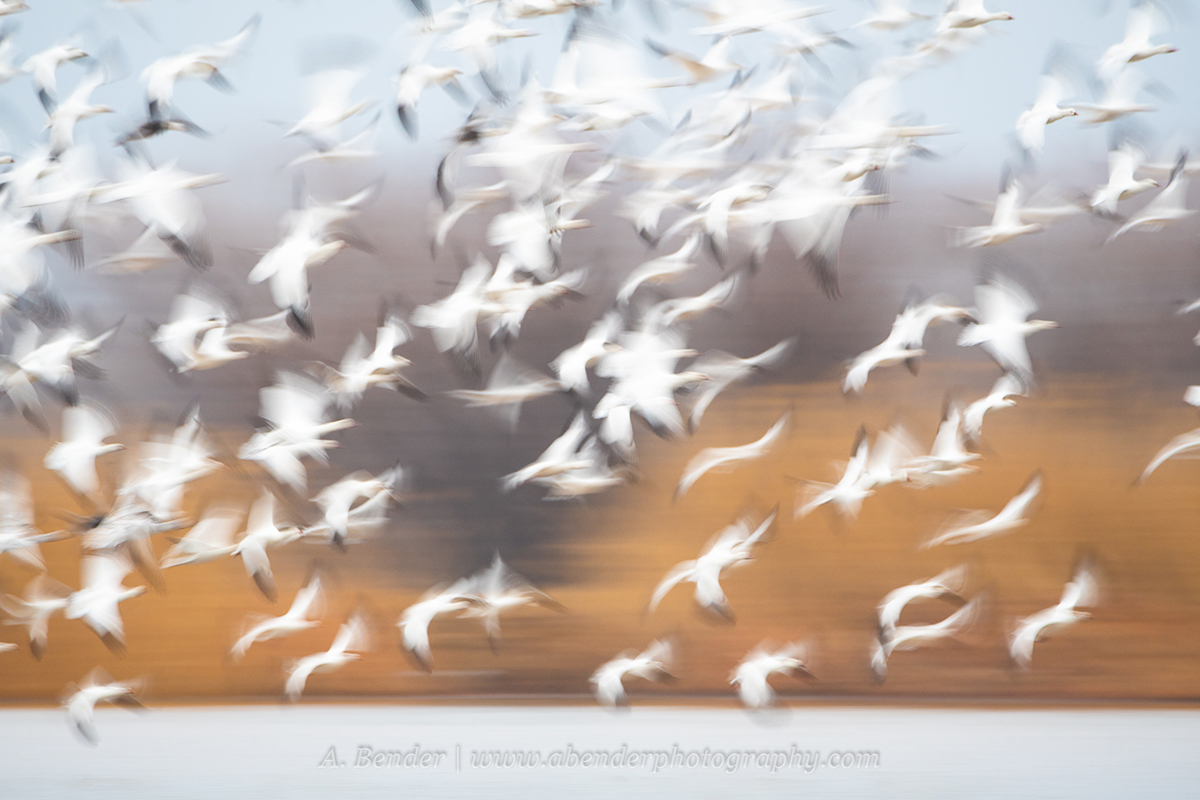How to Shoot: Fine-Art Wildlife and Nature
Alyce Bender uses her Tamron 150-600mm VC G2 to put a different, more abstract spin on her subjects.
More Photo Tips | Video Gallery | Photo Gallery | Enewsletter sign-up
By Jenn Gidman
Images by Alyce Bender
Alyce Bender is known for her passion for biodiversity, vulnerable species, and environmental awareness, all documented through her carefully captured images. But though you’ll find many traditional nature and wildlife photos in her portfolio, Alyce also enjoys creating abstract and impressionistic imagery that taps into a different side of her brain.
“Instead of simply taking a photo of a crane in flight, for example, I’ll try to create the visual personification of that,” she says. “In other words, I want you to feel that emotion you feel when you see the crane in flight, or two rivers coming together. I want you to puzzle over the image a bit and let your brain create a story to accompany it.”
To take the photos for these particular collections, Alyce uses the Tamron 150-600mm VC G2 telephoto zoom. “This lens gives me the reach I need to focus in on areas of detail, texture, and movement, for both my traditional nature and wildlife photos and for my fine-art work,” she says. “Its versatility is a huge draw for me. I’ll often get bored while sitting around waiting for wildlife to show up to photograph. It’s amazing that I don’t even have to switch lenses to switch gears and create my more abstract work.”
Alyce tries to keep her fine-art images as simple and minimalist as possible, without using filters or Photoshop to create the movement and blur in her photos. “It’s all done in-camera,” she says. “People already know what a bison, bear, or coastline filled with reeds looks like, so I want to present my subjects in a different way. It makes the viewer pause and think a little more about the image.”
Read on for Alyce’s explainer on the thought process behind each piece created here with the 150-600mm G2 lens.
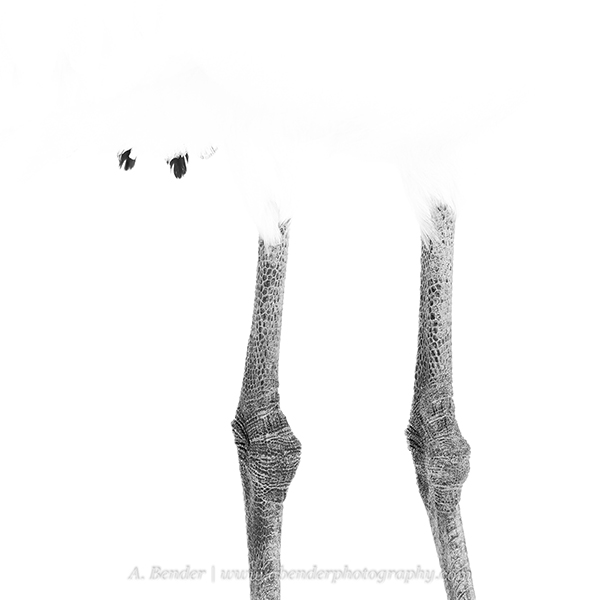
150-600mm (600mm), F/8, 1/1000th sec., ISO 500
Click image to view larger
This photo is of the legs of an endangered red-crowned crane, taken during a trip to Japan. It’s a primarily white bird, except for the red crown at the top of its head. It also has black feathers on the tips of its wings, though you usually don’t see them unless it’s in flight. This particular bird, which was against a snowy background, was preening and had its wingtips opened up a bit more than usual, so the black feathers were sticking out on either side of its body. Everyone always shows off the bird’s red crown when they take pictures of it, but I decided to concentrate on the legs instead. By shooting it in such a minimalist fashion, I felt it showcased the bird’s rareness and specialness.
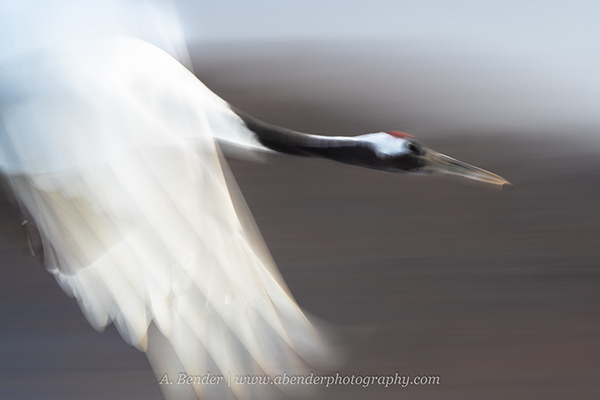
150-600mm (340mm), F/38, 1/13th sec., ISO 80
Click image to view larger
This is another more artistic photo of a red-crowned crane. It was in flight against a dark background, so its white feathers stood out. Because of the overcast skies, I took the opportunity to use a slower shutter speed to capture the bird as it was flying into the scene, across my frame.

150-600mm (500mm), F/6.3, 1/13th sec., ISO 200
Click image to view larger
I captured this flock of snow geese in Bosque del Apache in New Mexico. I had taken some traditional shots of the birds while I was visiting, but they seemed very static to me. I wanted to show movement, and because this scenario happens each winter morning at this wildlife refuge, I wanted to re-create what it felt like to see this flock taking off. It’s a ruckus of sound and blur.
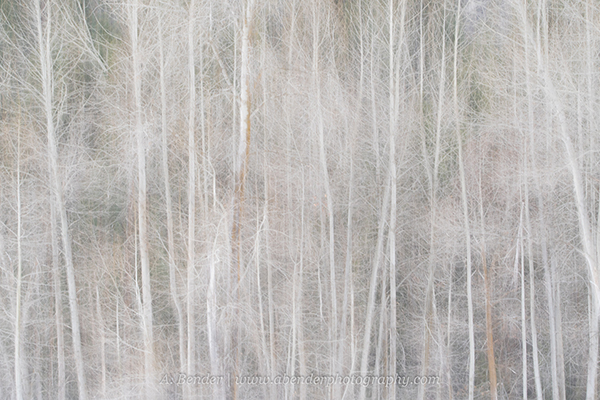
150-600mm (150mm), F/32, 1/15th sec., ISO 160
Click image to view larger
I’m always looking for pleasing lines and a simplification of scenes. I want my images to be very clean. That may seem contradictory in this photo, at first glance, due to the repetitive texture, but to me, the visual from that repetition comes across as one single unit, rather than chaos.
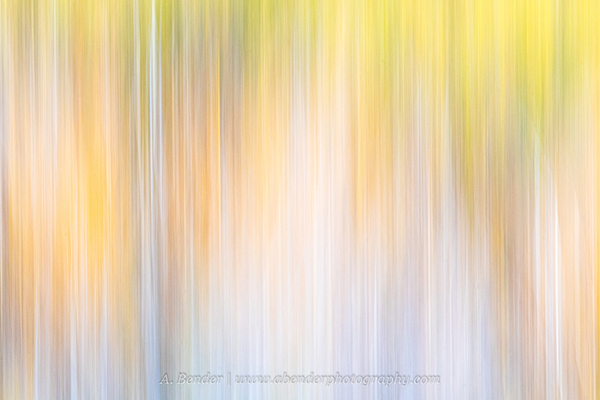
150-600mm (340mm), F/22, 1/20th sec., ISO 800
Click image to view larger
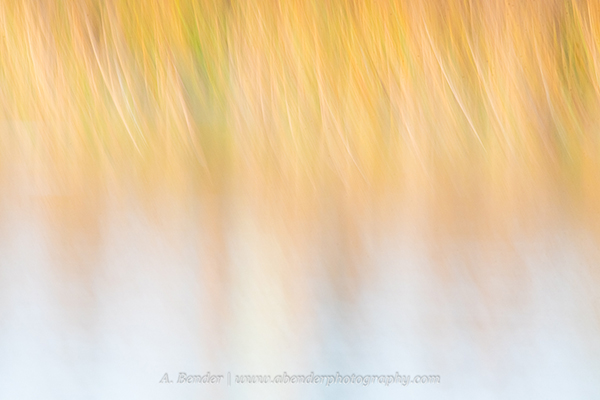
150-600mm (600mm), F/32, 1/10th sec., ISO 500
Click image to view larger
Both of these photos, “Autumn Blur” and “Reeds,” are of coastal reeds along the Texas coast. They’re examples of creative, impressionistic-style photos I often do a lot of at midday, because in that lighting it’s difficult to do much of the other types of shooting I want to do. Many of the images I take in this vein are shot at F/22 or F/32. That gives me a longer shutter speed, but it brings in all of the details, then blurs them to offer structure to the picture.
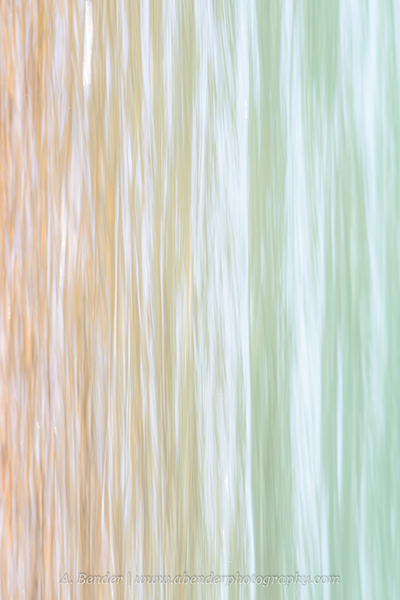
150-600mm (600mm), F/14, 1/8th sec., ISO 100
Click image to view larger
This is a photo that shows the confluence of two rivers combining. There’s one that has more sediment coming in, resulting in this gradient of color. I originally shot the photo as a horizontal, but due to its abstract nature, I felt it read better as a vertical. The photo is part of a “confluence” collection I'm working on where I capture the images horizontally, then turn them vertically to get people to interact and think more deeply about them. It’s a choice you can make as an artist.
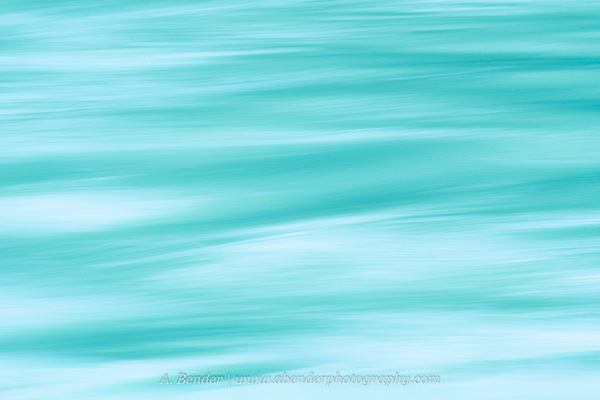
150-600mm (550mm), F/22, 1/6th sec., ISO 100
Click image to view larger
This photo is of the Kenai River, a glacial waterway along the Kenai Peninsula. It was the first glacier-blue river I’d ever seen—the colors you see here aren’t enhanced at all. I was sitting around, waiting for bears to show up so I could photograph them, when the flowing colors of the river caught my attention. I did a long-exposure handheld shot, capturing a bit of motion blur to show movement.
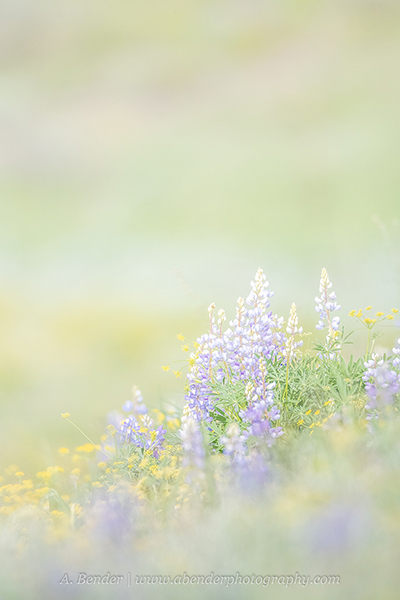
150-600mm (600mm), F/6.3, 1/2500th sec., ISO 800
Click image to view larger
This was my first time seeing wildflowers in the Tetons. I’d been waiting around to photograph some wildlife and was getting a little antsy when I spotted this lupine along the roadside. I used a shallow depth-of-field to create this soft, dreamy feel. That’s another reason I love this lens. It offers me the versatility to capture wildlife one moment, then turn and take a picture like this without skipping a beat. This lens isn’t just for wildlife or bird photographers—it’s for everyone.
To see more of Alyce Bender’s images, go to www.abenderphotography.com.
More Photo Tips | Watch Videos | Learn More About Tamron Lenses | Photo Gallery
